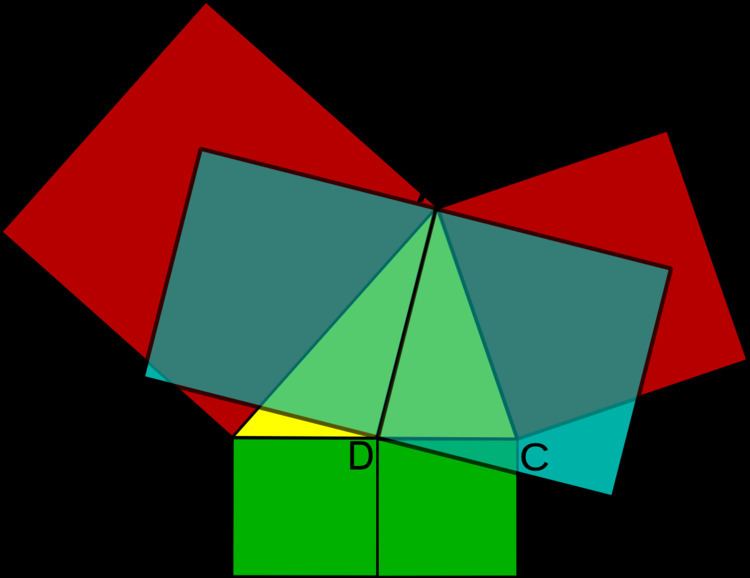 | ||
In geometry, Apollonius' theorem is a theorem relating the length of a median of a triangle to the lengths of its side. It states that "the sum of the squares of any two sides of any triangle equals twice the square on half the third side, together with twice the square on the median bisecting the third side"
Specifically, in any triangle ABC, if AD is a median, then
It is a special case of Stewart's theorem. For a right-angled triangle the theorem reduces to the Pythagorean theorem. From the fact that diagonals of a parallelogram bisect each other, the theorem is equivalent to the parallelogram law.
The theorem is named for Apollonius of Perga.
Proof
The theorem can be proved as a special case of Stewart's theorem, or can be proved using vectors (see parallelogram law). The following is an independent proof using the law of cosines.
Let the triangle have sides a, b, c with a median d drawn to side a. Let m be the length of the segments of a formed by the median, so m is half of a. Let the angles formed between a and d be θ and θ′ where θ includes b and θ′ includes c. Then θ′ is the supplement of θ and cos θ′ = −cos θ. The law of cosines for θ and θ′ states
Add these equations to obtain
as required.
